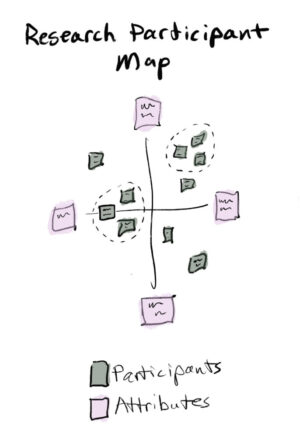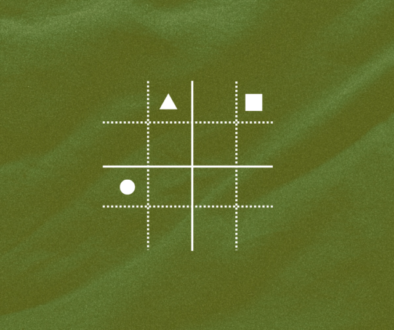Reflections on the Research Participant Map
Written by Jay Waite
I used the Research Participant Map method when deciding how I wanted to create my “day in the life” video for the Knotweed Lab website. Although it wasn’t specifically my thesis, it outlines all of our research work over the summer.
The research participant map method
The goal of the research participant map is to discover key target audience opportunity areas by mapping potential audiences across varying sets of attributes.
Initially, I wanted the video to target the scientific community. I began creating a script, but it was full of biological jargon and would have been hard to follow. After learning about additional creative methods, and the Research Participant Map in particular, I started to rethink my process.
Many of the people finding our website would be those who have knotweed on their property. While there could also be scientists and other specialized audiences, I didn’t want to ignore a whole demographic. What about farmers? Real estate agents? Or other individuals that are simply interested in learning more?
Getting into the process
Then, I began to think about the next step—what did I want to convey about our summer research? I knew I wanted to explain how knotweed was harmful (to reach the homeowners), but I also wanted to explain the bigger implications for the environment for other audiences.
I also wanted to create a sense of connection with the audience and our team as undergraduate research students. Not only could this make the general population more receptive to science, but it could also inform organizations about our work.
I thought about which audience would be the easiest to target. I thought that homeowners with knotweed and invasive species organizations would have the most resources and concern for the environment, but science organizations didn’t need to be exposed to the personal side of research.
Therefore, although I still wanted to be open to the scientific community, I decided I wanted to primarily target homeowners with knotweed on their property. To target this audience, I tried making my video visual, easy to follow, and personal.
Overall, I found this creative method useful in helping me choose how to move forward with my video design while also helping me be more efficient. This project has been a great opportunity to challenge myself to apply my knowledge in a meaningful way.





